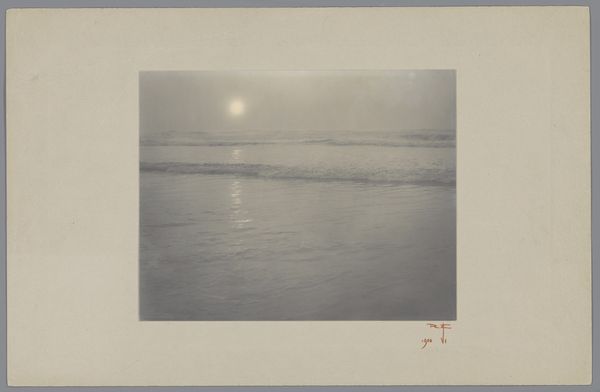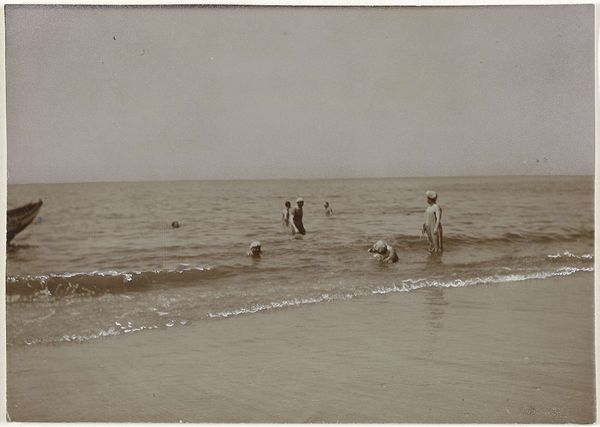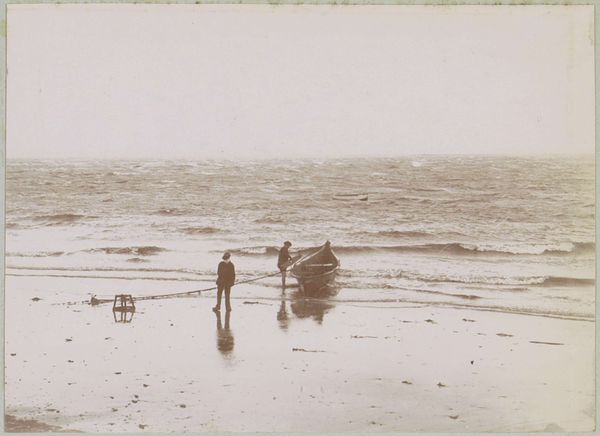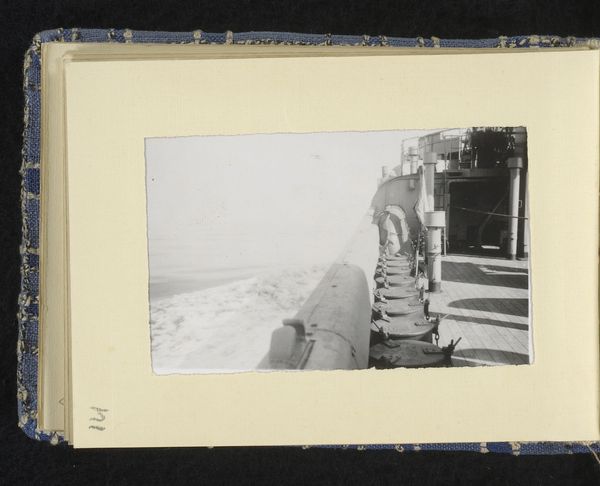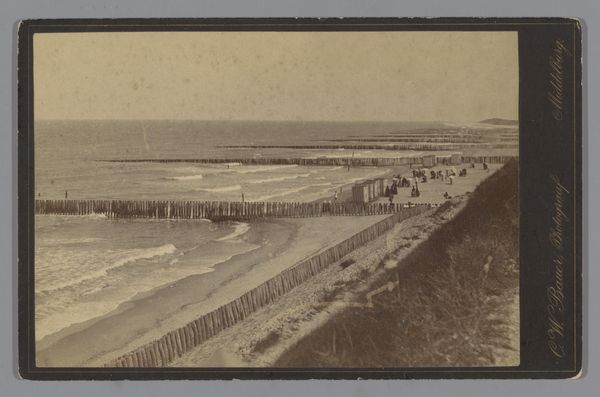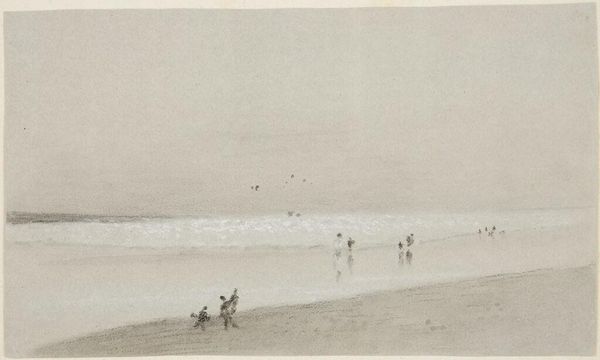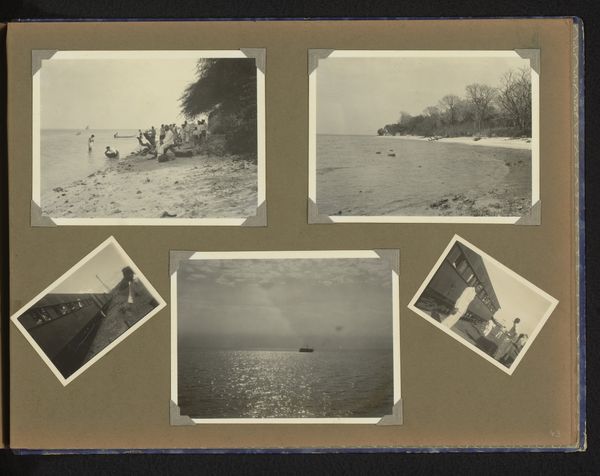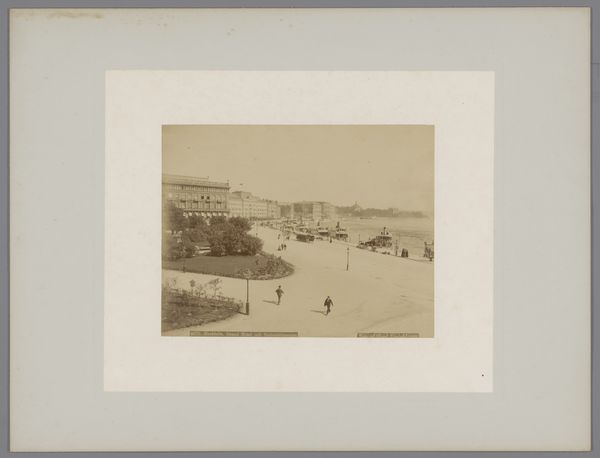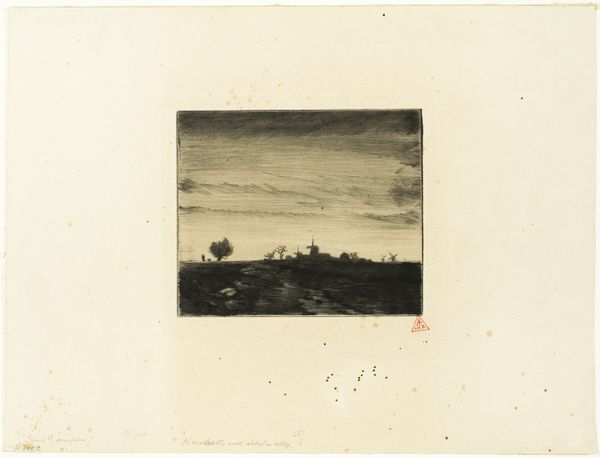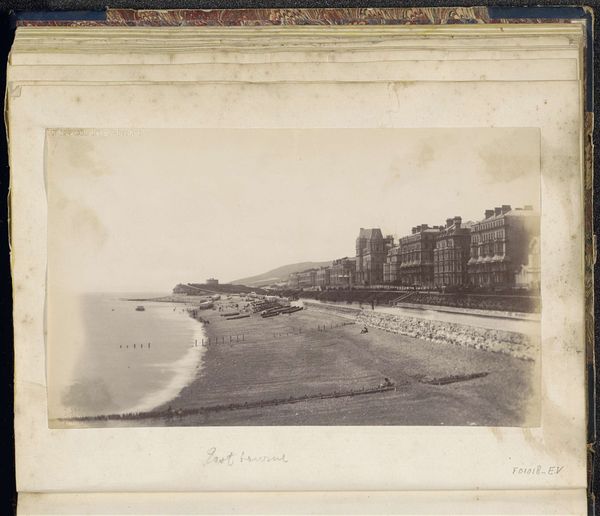
Dimensions: height 80 mm, width 160 mm
Copyright: Rijks Museum: Open Domain
Curator: Here we have "Familie Kessler zwemmend in zee," taken in 1899, a gelatin silver print currently residing in the Rijksmuseum. What's your first impression? Editor: I am immediately struck by its grayscale tonality—the way the light dances on the water. It feels remarkably immediate for a photograph from that era, capturing a transient moment of leisure. Curator: The Kessler family was part of the Dutch elite, and photographs like this offer us a glimpse into the construction of bourgeois identity at the fin de siècle. The family, nearly nude, is captured reveling in leisure in a public space, indicating the levels of freedom enjoyed, that were often unattainable across the class structure. How does the gelatin silver printing process figure into this reading? Editor: Absolutely, thinking about the material process underscores those nuances. Gelatin silver prints were relatively accessible at the time, pointing to a growing culture of amateur photography. But let's remember, photographic materials and techniques were constantly in flux, still requiring specialist knowledge; to achieve a clear result in this particular format and size, especially outside the studio and near water, suggests some dedication of resources. Curator: Precisely! It reveals the privileges required to engage in this type of leisure and artistic expression. The beach itself could also be seen as a contested site, emerging as a space for both recreation and, increasingly, anxieties about social boundaries and public display. We can think about the waves, both metaphorically and literally, pushing against constructed boundaries of propriety. Editor: The very act of photographing the family partially undressed contributes to these debates! It becomes a conscious articulation of what is permitted in this space. These subtleties are conveyed by the grayscale’s organic gradations of tone, making for a muted impression of sea and sky. I find myself dwelling on how the figures are framed, their immersion into the waves, up against those architectural pylons that loom in the background… What does that industrial feature evoke for you, when seen amidst all of this nature? Curator: The placement of those structural components is jarring—those piles represent modernization and the ever-growing human impact on nature. Here, they act almost like a social border in what appears to be a natural, carefree seascape, subtly reminding us of the constructed reality behind the image, and life during that period. Editor: In its apparent spontaneity, this photograph encapsulates broader tensions about progress and privilege—what’s recorded here resonates with so much material and social construction. Curator: Indeed, it is an artwork offering layers to unpack when critically considering the history of labor, class and photographic media itself.
Comments
No comments
Be the first to comment and join the conversation on the ultimate creative platform.

